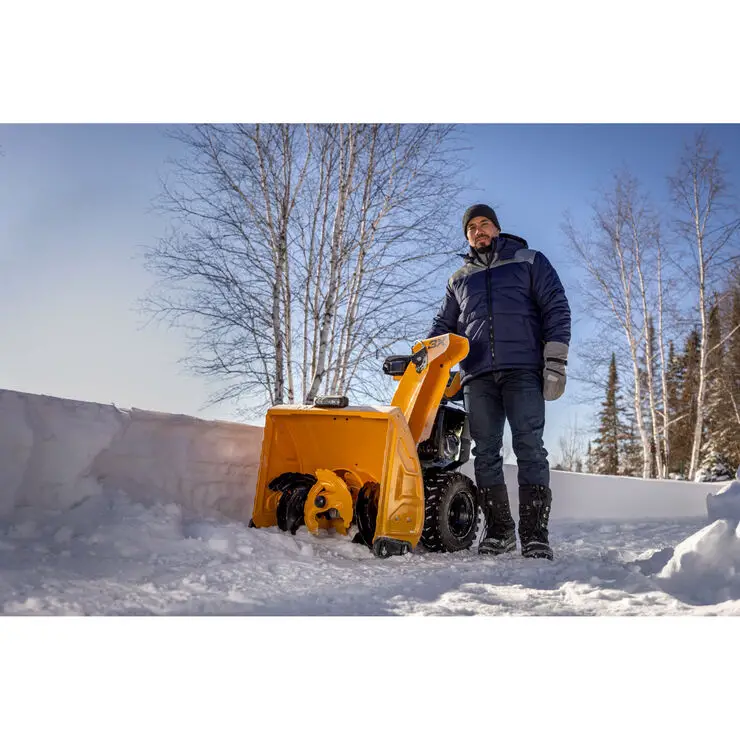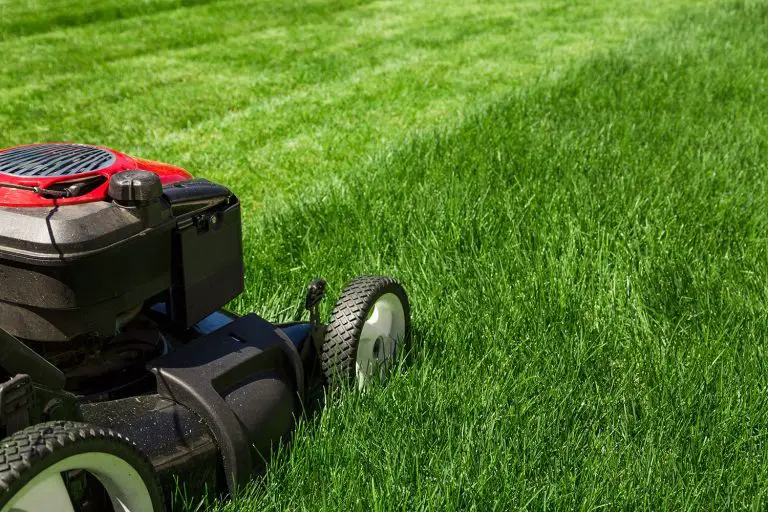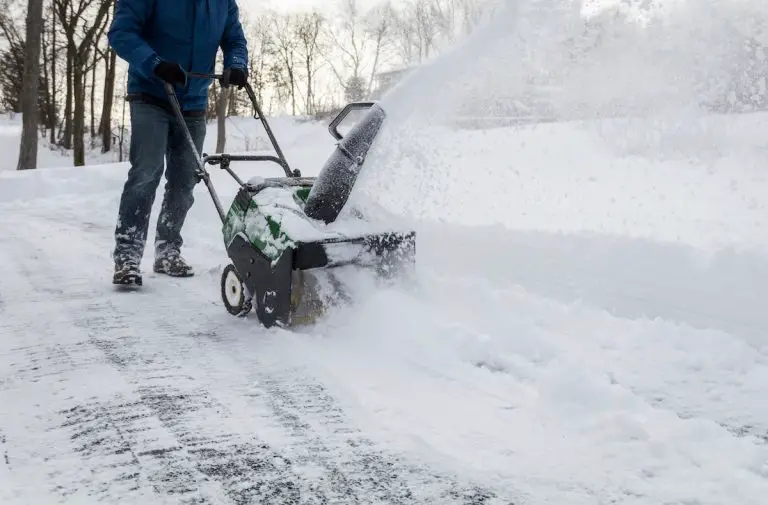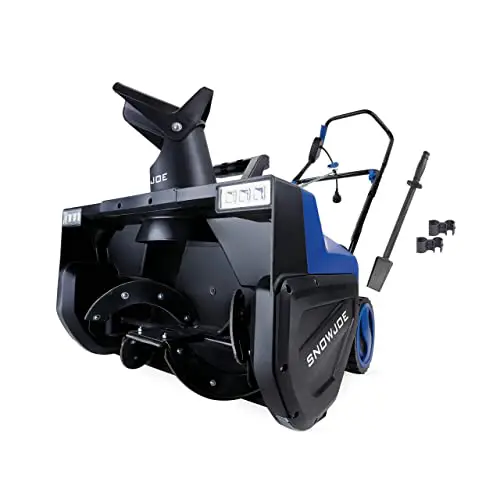If your snowblower is flooded, you can fix it by following these 4 tips. 4 tips about how to fix a flooded snowblower.
When your snowblower gets flooded, it can be a frustrating situation. Whether it’s due to over-priming or a malfunction in the fuel system, a flooded snowblower can prevent you from clearing that snow-covered driveway. However, there’s no need to panic.
With a few simple steps, you can rectify the situation and get your snowblower up and running again. In this article, we will discuss four tips to help you fix a flooded snowblower quickly and efficiently. By following these recommendations, you’ll be back to effortlessly clearing snow in no time.
:max_bytes(150000):strip_icc()/snow-blower-troubleshooting-4125541-001-475c2d9f1b704d478f0b06f09ca58336.jpg)
Credit: www.thespruce.com
Understanding The Problem
Signs Of A Flooded Snowblower
If you’ve ever had the unfortunate experience of a flooded snowblower, you know how frustrating it can be. But how can you tell if your snowblower is flooded? Here are some signs to look out for:
- The snowblower won’t start: One of the most obvious signs of a flooded snowblower is that it simply won’t start. You may hear the engine turning over, but it just won’t fire up.
- Strong smell of gasoline: Another indicator is a strong smell of gasoline when you try to start the snowblower. This can be a telltale sign that the engine is flooded.
- Sputtering or backfiring: A flooded snowblower may sputter or backfire when you try to start it. This is because the excess fuel in the engine is causing the combustion process to be disrupted.
- Excessive smoke: If you notice thick smoke coming from the exhaust of your snowblower, it could be a sign that the engine is flooded.
The Risks Of A Flooded Snowblower
A flooded snowblower not only prevents you from getting your driveway clear, but it can also cause some serious damage if not addressed promptly. Here are some risks associated with a flooded snowblower:
- Engine damage: When a snowblower is flooded, the excess fuel can wash away the oil on the cylinder walls, leading to increased friction and potential engine damage.
- Spark plug fouling: The excess fuel in the engine can also cause the spark plug to become fouled, making it difficult for the engine to ignite and run smoothly.
- Reduced performance: A flooded snowblower can significantly impact the performance of the engine, resulting in decreased power and efficiency.
- Safety hazards: Operating a flooded snowblower can be dangerous. It increases the risk of engine fires or explosions due to the accumulation of fuel in the engine and exhaust system.
Effects Of A Flooded Snowblower On Engine Performance
When a snowblower is flooded, it can have several adverse effects on engine performance. Here’s how a flooded snowblower can impact the engine:
- Difficulty starting: As mentioned earlier, a flooded snowblower may refuse to start altogether. The excess fuel prevents the engine from igniting, making it difficult to get the snowblower up and running.
- Rough running: If the engine does start despite being flooded, it may run rough. The excess fuel disrupts the combustion process, resulting in a sputtering or uneven performance.
- Power loss: A flooded snowblower can experience a significant loss of power. The engine is not able to operate at its full capacity, reducing the snowblower’s ability to effectively clear snow.
- Increased fuel consumption: When a snowblower is flooded, it tends to consume more fuel than usual. The excess fuel not only affects the engine’s efficiency but also empties the gas tank quicker.
Understanding the problem of a flooded snowblower is crucial for proper maintenance and troubleshooting. By recognizing the signs, understanding the risks, and being aware of the effects on engine performance, you’ll be better equipped to address the issue and get your snowblower back in working order.
Tip 1: Shutting Down Properly
A flooded snowblower can be a frustrating situation to deal with, but fear not! In this blog post, we’ll be sharing four essential tips on how to fix it. We’ll kick things off with our first tip: shutting down properly.
Importance Of Shutting Down Correctly
Shutting down your snowblower properly is crucial because it ensures that the engine is protected and ready for the next use. It helps prevent potential damage and makes it easier to address any issues that arise. When you shut down your snowblower correctly, you can avoid a flooded engine and save yourself from unnecessary repairs.
Steps To Shut Down A Snowblower Properly
Here are the steps you should follow to shut down your snowblower properly:
- Step 1: Disengage the blower – before shutting down your snowblower, make sure to disengage the blower. This will prevent any stray snow or debris from causing damage.
- Step 2: Turn off the ignition – locate the ignition switch and switch it off. This step will effectively cut off the power supply to the engine.
- Step 3: Remove the key – if your snowblower has a key-operated ignition, remove the key from the ignition switch. This extra precaution ensures that nobody can accidentally start the snowblower while you’re away.
- Step 4: Let the engine cool down – give the engine a chance to cool down before shutting it down completely. This will help prevent any potential damage caused by excessive heat.
- Step 5: Close the fuel valve – as a safety measure, close the fuel valve to prevent any fuel leaks or flooding. This step is especially important if you plan on storing your snowblower for an extended period.
By following these steps, you’ll be able to shut down your snowblower properly, ensuring its longevity and reducing the likelihood of encountering a flooded engine in the future.
Remember, shutting down correctly is just the first step in handling a flooded snowblower. Stay tuned for the next tips, where we’ll cover more essential information on fixing and preventing this common issue. Keep your snowblower running smoothly and get ready to tackle the snow with ease!
Tip 2: Clearing The Fuel System
If your snowblower has been flooded, you’ll need to address the fuel system to get it running smoothly again. Here are a few steps to help you clear the fuel system efficiently:
How To Drain Old Fuel:
- Begin by disconnecting the spark plug wire to prevent any accidental starting of the engine.
- Locate the fuel tank on your snowblower and position a suitable container beneath it to catch the fuel.
- Remove the fuel cap and carefully drain the old fuel into the container.
- Check for any signs of contamination or debris in the fuel. If present, it’s advisable to dispose of the fuel properly and clean the tank before refilling it.
Removing And Cleaning The Carburetor:
- The carburetor is a critical component of the fuel system. Locate it on the engine.
- Remove the carburetor bowl by unscrewing the bolt at the bottom. Be cautious as it may contain old fuel or residue that can spill out.
- Inspect the bowl and the fuel passages for any clogs or blockages. If necessary, use a carburetor cleaner and a soft brush to clean them carefully.
- Wipe the carburetor bowl and reinstall it securely, ensuring the gasket is properly seated.
Inspecting Fuel Lines And Filters:
- Check the fuel lines for any cracks, kinks, or leaks. If you notice any damage, it’s best to replace the affected lines.
- Locate the fuel filter in the fuel line between the fuel tank and the carburetor. Remove the filter and inspect it for blockages or signs of wear.
- Clean or replace the fuel filter as needed, ensuring it is properly installed and connected.
By following these tips, you’ll effectively clear the fuel system of your flooded snowblower, allowing it to function properly again. Keep in mind that if you’re unsure about any step, it’s always recommended to consult the manufacturer’s manual or seek professional assistance.
Stay tuned for the next tip on how to fix a flooded snowblower!
Tip 3: Cleaning The Spark Plug
Having a flooded snowblower can be a frustrating experience, especially when you’re in the midst of a winter storm and desperately need to clear your driveway or walkway. In this blog post, we will discuss some tips on how to fix a flooded snowblower.
In this section, we will focus on the importance of a clean spark plug and provide a step-by-step guide on how to clean it.
Importance Of A Clean Spark Plug
A clean spark plug plays a vital role in the efficient functioning of your snowblower. It provides the spark necessary to ignite the fuel-air mixture, which in turn powers the engine. If the spark plug is dirty or covered in residue, it may not generate a strong spark or may fail to spark altogether.
This can lead to difficulty in starting the snowblower or poor engine performance. Regularly cleaning the spark plug helps ensure smooth operation and reliable ignition.
Step-By-Step Guide To Cleaning The Spark Plug
To clean the spark plug on your flooded snowblower, follow these simple steps:
- Disconnect the spark plug wire: Before cleaning the spark plug, make sure to disconnect the spark plug wire to prevent accidental engine start-up.
- Remove the spark plug: Use a spark plug socket and ratchet to carefully remove the spark plug from the cylinder head. Take note of its position and any signs of wear or damage.
- Inspect the spark plug: Examine the spark plug for signs of fouling, such as excessive carbon buildup, oil deposits, or corrosion. A fouled spark plug can hinder the spark and affect engine performance.
- Clean the spark plug: Use a wire brush or spark plug cleaning tool to gently remove any deposits from the spark plug. Ensure that the electrode and the spark gap are free from any debris. Avoid using excessive force or abrasive materials to prevent damage.
- Check the spark plug gap: Use a feeler gauge to measure the gap between the center and ground electrode of the spark plug. Refer to your snowblower’s manual for the recommended gap specifications. Adjust the gap if necessary by carefully bending the ground electrode.
- Reinstall the spark plug: Carefully insert the cleaned spark plug back into the cylinder head and tighten it manually. Use the spark plug socket and ratchet to securely tighten the spark plug without over-tightening.
- Reconnect the spark plug wire: Once the spark plug is securely installed, reattach the spark plug wire to ensure a proper connection.
By following these steps to clean your snowblower’s spark plug, you can effectively address the issues caused by flooding and restore its optimal performance. Remember to consult your snowblower’s manual for specific instructions and safety precautions.
Tip 4: Drying Out The Engine
Dealing with a flooded snowblower can be frustrating, but fear not! With a few simple techniques, you can effectively dry out the engine and get your snowblower back in working condition. Here are some key points to keep in mind when tackling this task:
- Techniques to remove excess moisture:
- Remove the spark plug wire from the spark plug to prevent accidental starts.
- Tilt the snowblower back to an angled position to allow any excess fuel to drain from the engine.
- Use an absorbent cloth to wipe away any visible moisture on the exterior of the snowblower.
- Allow the snowblower to sit for a few hours in a dry and well-ventilated area to air out.
- Consider using a hairdryer on a low heat setting to gently blow warm air into the engine to aid in the drying process.
- Precautions to prevent further damage:
- Ensure the engine is completely dry before attempting to start the snowblower again.
- Check the oil dipstick for signs of water contamination. If water is present, it’s recommended to drain and replace the oil before starting the snowblower.
- Inspect the air filter and clean or replace it if necessary.
- Double-check all electrical connections to ensure they are dry and securely attached.
- Before starting the snowblower, refer to the manufacturer’s manual for any specific instructions or recommendations.
By following these techniques to remove excess moisture and taking precautions to prevent further damage, you can effectively dry out the engine of a flooded snowblower. Remember to prioritize safety and consult the manufacturer’s guidelines for the best results. With a little patience and care, you’ll have your snowblower up and running in no time.
Preventive Maintenance
Undergoing preventive maintenance steps can significantly extend the life of your snowblower and save you from unnecessary repair issues down the line. By investing some time and effort into proper winter storage, performing seasonal maintenance checks, and regularly inspecting and changing the oil, you can ensure your snowblower is always ready to tackle the winter weather.
Here are four essential tips to help you keep your snowblower in top shape:
Winter Storage Tips
- Clean the snowblower thoroughly: Before putting your snowblower in storage for the offseason, make sure to remove any dirt, debris, or moisture from the machine. Cleaning it prevents rust and clogging issues when you take it out again.
- Drain the fuel: Storing a snowblower with leftover fuel can cause damage to the engine and carburetor. To avoid this, run the machine until it’s out of fuel or use a fuel stabilizer to preserve the remaining fuel.
- Check the tires: Inflate the tires to the recommended pressure before storing the snowblower. This step prevents flat spots and uneven wear during the idle months.
- Store in a dry, protected area: Find a clean, dry place to store your snowblower, such as a shed or garage. Cover it with a tarp or protective cover to shield it from dust and moisture.
Seasonal Maintenance Checklist
- Replace the spark plug: A worn-out spark plug can hinder the snowblower’s performance. Replace it each season to ensure a reliable spark and efficient ignition.
- Inspect the belts and auger: Look for signs of wear or damage on the belts and auger assembly. Replace any worn-out or frayed belts, and lubricate the auger as per the manufacturer’s instructions.
- Check the scraper bar and skid shoes: Examine the scraper bar and skid shoes for any excessive wear. These components help prevent damage to your snowblower and reduce the risk of scraping the surface you’re clearing.
- Inspect the shear pins: Ensure the shear pins, which protect the auger from damage if it gets jammed, are intact and securely attached. Replace any broken or missing pins before use.
Importance Of Regular Inspections And Oil Changes
- Inspect before each use: Before starting your snowblower, conduct a quick visual inspection to ensure all components are in good working order. Look for loose bolts, damaged cables, or loose belts that may need tightening or replacement.
- Clean or replace the air filter: A clogged air filter restricts airflow to the engine, reducing performance. Clean or replace it regularly to allow proper ventilation and prevent engine damage.
- Regular oil changes: Follow the manufacturer’s recommendations for oil changes. Fresh oil ensures proper lubrication of the engine’s internal parts and keeps it running smoothly.
With these preventive maintenance tips, you can enjoy hassle-free snow removal while maximizing the longevity and performance of your snowblower. Remember to always refer to your owner’s manual for specific instructions and consult a professional if you encounter any major issues or concerns.
Stay prepared and keep that snowblower running like a well-oiled machine all winter long!
Conclusion
To sum up, a flooded snowblower can be a frustrating issue to deal with, but with the right knowledge and steps, it can be easily resolved. Firstly, make sure to turn off the fuel valve and remove any excess fuel from the carburetor.
Next, clean or replace the spark plug to ensure proper ignition. Additionally, inspect the air filter for any signs of damage or blockage and clean or replace it accordingly. Lastly, if necessary, consult the user manual or seek professional help for any further troubleshooting or repairs.
By following these four tips, you can effectively fix a flooded snowblower and get back to clearing snow efficiently. Remember, regular maintenance and proper care can help prevent future flooding issues and ensure the longevity of your snowblower.







